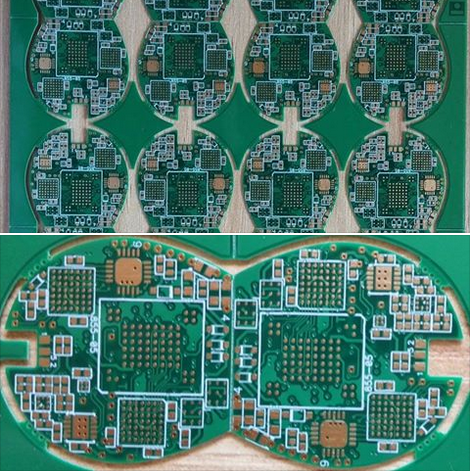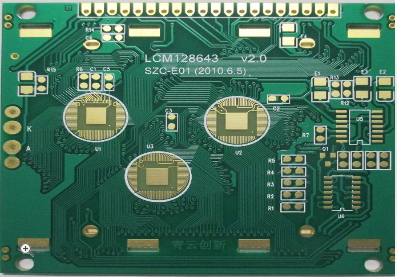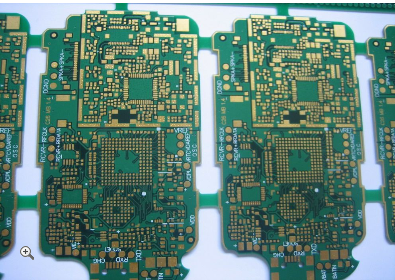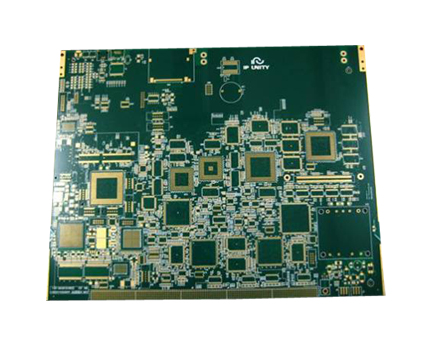-
 Agriculture
Agriculture
-
 Health-Care
Health-Care
-
 Environment
Environment
-
 Construction-Real-Estate
Construction-Real-Estate
-
 Tools-Hardware
Tools-Hardware
-
 Home-Garden
Home-Garden
-
 Furniture
Furniture
-
 Luggage-Bags-Cases
Luggage-Bags-Cases
-
 Medical-devices-Supplies
Medical-devices-Supplies
-
 Gifts-Crafts
Gifts-Crafts
-
 Sports-Entertainment
Sports-Entertainment
-
 Food-Beverage
Food-Beverage
-
 Vehicles-Transportation
Vehicles-Transportation
-
 Power-Transmission
Power-Transmission
-
 Material-Handling
Material-Handling
-
 Renewable-Energy
Renewable-Energy
-
 Safety
Safety
-
 Testing-Instrument-Equipment
Testing-Instrument-Equipment
-
 Construction-Building-Machinery
Construction-Building-Machinery
-
 Pet-Supplies
Pet-Supplies
-
 Personal-Care-Household-Cleaning
Personal-Care-Household-Cleaning
-
 Vehicle-Accessories-Electronics-Tools
Vehicle-Accessories-Electronics-Tools
-
 School-Office-Supplies
School-Office-Supplies
-
 Packaging-Printing
Packaging-Printing
-
 Mother-Kids-Toys
Mother-Kids-Toys
-
 Business-Services
Business-Services
-
 Commercial-Equipment-Machinery
Commercial-Equipment-Machinery
-
 Apparel-Accessories
Apparel-Accessories
-
 Security
Security
-
 Shoes-Accessories
Shoes-Accessories
-
 Vehicle-Parts-Accessories
Vehicle-Parts-Accessories
-
 Jewelry-Eyewear-Watches-Accessories
Jewelry-Eyewear-Watches-Accessories
-
 Lights-Lighting
Lights-Lighting
-
 Fabric-Textile-Raw-Material
Fabric-Textile-Raw-Material
-
 Fabrication-Services
Fabrication-Services
-
 Industrial-Machinery
Industrial-Machinery
-
 Consumer-Electronics
Consumer-Electronics
-
 Electrical-Equipment-Supplies
Electrical-Equipment-Supplies
-
 Electronic-Components-Accessories-Telecommunications
Electronic-Components-Accessories-Telecommunications
-
 Home-Appliances
Home-Appliances
-
 Beauty
Beauty
-
 Chemicals
Chemicals
-
 Rubber-Plastics
Rubber-Plastics
-
 Metals-Alloys
Metals-Alloys
- Masonry Materials
- Curtain Walls & Accessories
- Earthwork Products
- Fireproofing Materials
- Heat Insulation Materials
- Plastic Building Materials
- Building Boards
- Soundproofing Materials
- Timber
- Waterproofing Materials
- Balustrades & Handrails
- Bathroom & Kitchen
- Flooring & Accessories
- Tiles & Accessories
- Door, Window & Accessories
- Fireplaces & Stoves
- Floor Heating Systems & Parts
- Stairs & Stair Parts
- Ceilings
- Elevators & Escalators
- Stone
- Countertops, Vanity Tops & Table Tops
- Mosaics
- Metal Building Materials
- Multifunctional Materials
- Ladders & Scaffoldings
- Mouldings
- Corner Guards
- Decorative Films
- Formwork
- Building & Industrial Glass
- Other Construction & Real Estate
- Wallpapers/Wall panels
- HVAC System & Parts
- Outdoor Facilities
- Prefabricated Buildings
- Festive & Party Supplies
- Bathroom Products
- Household Sundries
- Rain Gear
- Garden Supplies
- Household Cleaning Tools & Accessories
- Lighters & Smoking Accessories
- Home Storage & Organization
- Household Scales
- Smart Home Improvement
- Home Textiles
- Kitchenware
- Drinkware & Accessories
- Dinnerware, Coffee & Wine
- Home Decor
- Golf
- Fitness & Body Building
- Amusement Park Facilities
- Billiards, Board Game,Coin Operated Games
- Musical Instruments
- Outdoor Affordable Luxury Sports
- Camping & Hiking
- Fishing
- Sports Safety&Rehabilitation
- Ball Sports Equipments
- Water Sports
- Winter Sports
- Luxury Travel Equipments
- Sports Shoes, Bags & Accessories
- Cycling
- Other Sports & Entertainment Products
- Artificial Grass&Sports Flooring&Sports Court Equipment
- Scooters
- Food Ingredients
- Honey & Honey Products
- Snacks
- Nuts & Kernels
- Seafood
- Plant & Animal Oil
- Beverages
- Fruit & Vegetable Products
- Frog & Escargot
- Bean Products
- Egg Products
- Dairy Products
- Seasonings & Condiments
- Canned Food
- Instant Food
- Baked Goods
- Other Food & Beverage
- Meat & Poultry
- Confectionery
- Grain Products
- Feminie Care
- Hair Care & Styling
- Body Care
- Hands & Feet Care
- Hygiene Products
- Men's Grooming
- Laundry Cleaning Supplies
- Travel Size & Gift Sets
- Room Deodorizers
- Other Personal Care Products
- Pest Control Products
- Special Household Cleaning
- Floor Cleaning
- Kitchen & Bathroom Cleaning
- Oral Care
- Bath Supplies
- Yellow Pages
- Correction Supplies
- Office Binding Supplies
- Office Cutting Supplies
- Board Erasers
- Office Adhesives & Tapes
- Education Supplies
- Pencil Cases & Bags
- Notebooks & Writing Pads
- File Folder Accessories
- Calendars
- Writing Accessories
- Commercial Office Supplies
- Pencil Sharpeners
- Pens
- Letter Pad/Paper
- Paper Envelopes
- Desk Organizers
- Pencils
- Markers & Highlighters
- Filing Products
- Art Supplies
- Easels
- Badge Holder & Accessories
- Office Paper
- Printer Supplies
- Book Covers
- Other Office & School Supplies
- Stationery Set
- Boards
- Clipboards
- Stamps
- Drafting Supplies
- Stencils
- Electronic Dictionary
- Books
- Map
- Magazines
- Calculators
- Baby & Toddler Toys
- Educational Toys
- Classic Toys
- Dress Up & Pretend Play
- Toy Vehicle
- Stuffed Animals & Plush Toys
- Outdoor Toys & Structures
- Balloons & Accessories
- Baby Food
- Children's Clothing
- Baby Supplies & Products
- Maternity Clothes
- Kids Shoes
- Baby Care
- Novelty & Gag Toys
- Dolls & Accessories
- Puzzle & Games
- Blocks & Model Building Toys
- Toddler Clothing
- Baby Clothing
- Kids' Luggage & Bags
- Arts, Crafts & DIY Toys
- Action & Toy Figures
- Baby Appliances
- Hobbies & Models
- Remote Control Toys
- Promotional Toys
- Pregnancy & Maternity
- Hygiene Products
- Kid's Textile&Bedding
- Novelty & Special Use
- Toy Weapons
- Baby Gifts
- Baby Storage & Organization
- Auto Drive Systems
- ATV/UTV Parts & Accessories
- Marine Parts & Accessories
- Other Auto Parts
- Trailer Parts & Accessories
- Auto Transmission Systems
- Train Parts & Accessories
- Universal Parts
- Railway Parts & Accessories
- Auto Brake Systems
- Aviation Parts & Accessories
- Truck Parts & Accessories
- Auto Suspension Systems
- Auto Lighting Systems
- New Energy Vehicle Parts & Accessories
- Auto Steering Systems
- Wheels, Tires & Accessories
- Bus Parts & Accessories
- Auto Performance Parts
- Cooling System
- Go-Kart & Kart Racer Parts & Accessories
- Air Conditioning Systems
- Heavy Duty Vehicle Parts & Accessories
- Auto Electrical Systems
- Auto Body Systems
- Auto Engine Systems
- Container Parts & Accessories
- Motorcycle Parts & Accessories
- Refrigeration & Heat Exchange Equipment
- Machine Tool Equipment
- Food & Beverage Machinery
- Agricultural Machinery & Equipment
- Apparel & Textile Machinery
- Chemical Machinery
- Packaging Machines
- Paper Production Machinery
- Plastic & Rubber Processing Machinery
- Industrial Robots
- Electronic Products Machinery
- Metal & Metallurgy Machinery
- Woodworking Machinery
- Home Product Manufacturing Machinery
- Machinery Accessories
- Environmental Machinery
- Machinery Service
- Electrical Equipment Manufacturing Machinery
- Industrial Compressors & Parts
- Tobacco & Cigarette Machinery
- Production Line
- Used Industrial Machinery
- Electronics Production Machinery
- Other Machinery & Industrial Equipment
- Camera, Photo & Accessories
- Portable Audio, Video & Accessories
- Television, Home Audio, Video & Accessories
- Video Games & Accessories
- Mobile Phone & Accessories
- Electronic Publications
- Earphone & Headphone & Accessories
- Speakers & Accessories
- Smart Electronics
- TV Receivers & Accessories
- Mobile Phone & Computer Repair Parts
- Chargers, Batteries & Power Supplies
- Used Electronics
- VR, AR, MR Hardware & Software
- Projectors & Presentation Equipments
- Other Consumer Electronics
- Cables & Commonly Used Accessories
- Computer Hardware & Software
- Displays, Signage and Optoelectronics
- Discrete Semiconductors
- Wireless & IoT Module and Products
- Telecommunications
- Connectors, Terminals & Accessories
- Development Boards, Electronic Modules and Kits
- Circuit Protection
- Sensors
- Isolators
- Audio Components and Products
- Integrated Circuits
- Power Supplies
- Relays
- RF, Microwave and RFID
- Electronic Accessories & Supplies
- Passive Components
- PCB & PCBA
- Air Quality Appliances
- Home Appliance Parts
- Heating & Cooling Appliances
- Small Kitchen Appliances
- Laundry Appliances
- Water Heaters
- Water Treatment Appliances
- Refrigerators & Freezers
- Personal Care & Beauty Appliances
- Major Kitchen Appliances
- Cleaning Appliances
- Second-hand Appliances
- Smart Home Appliances
- Other Home Appliances
- Energy Chemicals
- Inorganic Chemicals
- Basic Organic Chemicals
- Agrochemicals
- Admixture & Additives
- Catalysts & Chemical Auxiliary Agents
- Pigments & Dyestuff
- Coating & Paint
- Daily Chemicals
- Polymer
- Organic Intermediate
- Adhesives & Sealants
- Chemical Waste
- Biological Chemical Products
- Surface Treatment Chemicals
- Painting & Coating
- Chemical Reagents
- Flavor & Fragrance
- Non-Explosive Demolition Agents
- Other Chemicals
- Custom Chemical Services
Custom High Frequency PCB Fabrication for Phased Array Radar Applications
In the rapidly evolving field of modern defense and aerospace technology, phased array radar systems represent a pinnacle of innovation, offering unparalleled capabilities in target detection, tracking, and electronic warfare. At the heart of these sophisticated systems lies a critical, yet often overlooked, component: the custom high-frequency printed circuit board (PCB). The fabrication of these specialized PCBs is not merely a manufacturing process but a precise engineering discipline that directly dictates the performance, reliability, and effectiveness of the entire radar system. As the demand for higher resolution, greater bandwidth, and more compact radar solutions grows, the role of advanced PCB fabrication becomes increasingly paramount. This article delves into the intricate world of custom high-frequency PCB fabrication, exploring the unique challenges, material considerations, and manufacturing techniques essential for meeting the stringent requirements of phased array radar applications.
Material Selection for Optimal High-Frequency Performance
The foundation of any high-frequency PCB is its substrate material. Unlike standard FR-4 materials used in conventional electronics, phased array radars demand substrates with exceptional electrical properties to minimize signal loss and maintain signal integrity at microwave and millimeter-wave frequencies. Materials such as polytetrafluoroethylene (PTFE), often known by brand names like Rogers or Taconic, are frequently chosen for their low dielectric constant (Dk) and low dissipation factor (Df). A stable and low Dk is crucial for controlling the velocity of the electromagnetic waves traveling across the PCB, ensuring precise phase relationships between the individual antenna elements in the array. Similarly, a low Df is essential to minimize dielectric losses, which can attenuate the high-frequency signals and reduce the radar's effective range and sensitivity.
Furthermore, the thermal management properties of the substrate material are of critical importance. Phased array radars can generate significant heat during operation, and the PCB material must exhibit a low coefficient of thermal expansion (CTE) to maintain dimensional stability. A mismatch in CTE between the substrate and the copper layers can lead to delamination or cracked vias, especially under thermal cycling conditions. Therefore, material selection involves a careful balance of electrical performance, thermal stability, and mechanical reliability. Advanced ceramic-filled PTFE composites or hydrocarbon-based laminates are often employed to achieve this balance, providing the necessary performance for demanding radar environments.
Precision in Design and Manufacturing Tolerances
The design phase of a high-frequency PCB for phased array radar is a highly specialized task that requires sophisticated electromagnetic simulation tools. Engineers must meticulously design the transmission lines, such as microstrips or striplines, to have precise characteristic impedances, typically 50 ohms. Any deviation can result in signal reflections, standing waves, and a degradation of the radar's beamforming capabilities. The layout must account for the exact positioning of each antenna element, the feed network, and the associated control electronics, ensuring minimal path length differences to maintain phase coherence across the entire array. This level of precision extends to the smallest details, including the geometry of solder masks and the surface finish of the copper traces.
Manufacturing these designs demands equally rigorous tolerances. The etching process must produce trace widths and spacings with extreme accuracy, often within microns, to maintain the designed impedance. Layer-to-layer registration is another critical factor; misalignment between layers can alter the electromagnetic field distribution and ruin the performance of coupled structures like broadside-coupled striplines. Drilling for vias, especially for blind and buried vias used in high-density interconnect (HDI) designs, must be executed with high precision to ensure reliable electrical connections without introducing parasitic capacitances or inductances. The entire fabrication process is conducted in a controlled environment to prevent contamination that could affect the material's dielectric properties.
Advanced Plating and Surface Finishes
The plating of through-holes and vias is a vital step in ensuring signal integrity and power delivery across the PCB. For high-frequency applications, a uniform copper plating thickness is essential to maintain consistent impedance in the vertical interconnects. Any voids or variations in the plating can act as impedance discontinuities, reflecting signals and causing losses. Electroless copper deposition followed by electrolytic copper plating is the standard process, but it must be carefully controlled. Additionally, the choice of final surface finish can significantly impact performance at high frequencies. While finishes like Electroless Nickel Immersion Gold (ENIG) are common for their flat surface and good solderability, they can introduce slight losses at very high frequencies due to the nickel layer's magnetic properties.
Alternative surface finishes such as Immersion Silver or Electroless Palladium Immersion Gold (EPIG) are sometimes preferred for superior high-frequency performance, as they offer lower loss characteristics. The surface finish also plays a role in the long-term reliability of the PCB, protecting the copper from oxidation and ensuring reliable solder joints for components. In corrosive environments typical of aerospace applications, the robustness of the finish is as important as its electrical properties. Therefore, the selection and application of the plating and surface finish are integral parts of the custom fabrication process, tailored to the specific frequency band and operational lifespan of the radar system.
Testing and Quality Assurance for Mission-Critical Reliability
Given the mission-critical nature of phased array radars, rigorous testing and quality assurance are non-negotiable phases of PCB fabrication. Electrical testing begins with continuity and isolation tests to check for short or open circuits. However, for high-frequency boards, this is just the beginning. Advanced testing methods like Time Domain Reflectometry (TDR) are employed to measure the impedance profile of transmission lines throughout the board, identifying any imperfections or discontinuities that could impair performance. Vector Network Analyzer (VNA) testing is used to characterize the scattering parameters (S-parameters) of the PCB, measuring insertion loss, return loss, and phase shift across the operational frequency band.
Beyond electrical testing, environmental and mechanical tests are conducted to ensure the PCB can withstand the harsh conditions of its intended application. This includes thermal cycling tests to simulate years of operation in a short time, vibration and shock tests to mimic the physical stresses of aerospace environments, and hygroscopic testing to assess performance under high humidity. Cross-sectional analysis is often performed on sample coupons from the production panel to verify plating quality, layer alignment, and laminate integrity. This comprehensive suite of tests ensures that every custom high-frequency PCB delivered for a phased array radar system meets the highest standards of quality and reliability, enabling the radar to perform its vital functions with unwavering accuracy.
REPORT































































































































































































































































































































































































































































































































































































